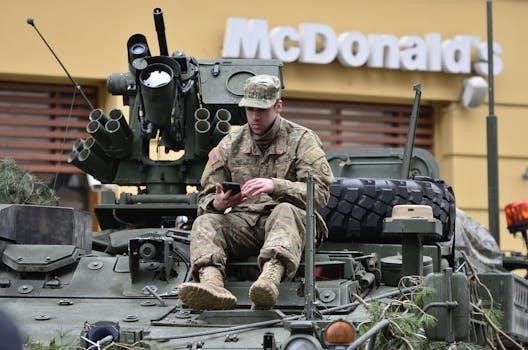the security classification guide states cpl rice and sgt davis
Category : Guide
Understanding the Security Classification Guide (SCG)
The Security Classification Guide (SCG) is a crucial document for derivative classification. It outlines specific information elements that require protection. The SCG indicates the classification level, reason for classification, and downgrading information.
The Role of the SCG in Information Security
The Security Classification Guide (SCG) plays a vital role in maintaining information security. It acts as the primary reference for those who derivatively classify new documents. The SCG ensures consistent application of security classifications across different documents and organizations. It dictates how to handle sensitive information, preventing unauthorized disclosure. The SCG provides specific guidance on what elements require classification. Furthermore, it specifies the level of classification required. Without the SCG, derivative classifiers would lack a standardized approach, leading to inconsistencies and potential security breaches. It facilitates the proper protection of national security information. Additionally, it aids in making sure that information is shared appropriately. The SCG also outlines downgrading and declassification instructions. The SCG is essential for maintaining a reliable security framework.
Key Elements within an SCG Document
An SCG document contains several key elements that are crucial for proper information security. Firstly, it specifies the classification level for particular data, whether it’s Confidential, Secret, or Top Secret. Secondly, it provides the reason for each classification. This helps users understand why a piece of information is protected. The SCG will also detail downgrading instructions, indicating when and how a classification level can be lowered. Furthermore, it includes declassification information, specifying when information can be made public. It may also contain special handling instructions for certain types of data. Additionally, the SCG identifies authorized sources that can be used for derivative classification. It may also outline specific rules for classification by compilation. This includes how to handle the combination of individual pieces of information. It is vital for derivative classifiers to adhere to the guidelines and instructions outlined within an SCG.

Case Study⁚ Cpl Rice and Sgt Davis
Let’s examine a practical scenario involving Cpl Rice and Sgt Davis. Their participation in a joint exercise is subject to specific classification guidelines, as detailed in the SCG.
Initial Classification⁚ Cpl Rice and Sgt Davis’s Joint Exercise
The Security Classification Guide (SCG) initially dictates that the mere fact of Cpl Rice and Sgt Davis attending a joint exercise is considered classified information. This means that this specific piece of information, on its own, requires protection from unauthorized disclosure, thus it is not considered unclassified. The SCG provides this classification level to safeguard sensitive details about personnel movements and operational readiness. The presence of Cpl Rice and Sgt Davis at the exercise is not a matter of public knowledge; it needs to be handled carefully, according to established protocols. This initial classification ensures that potential adversaries or unauthorized individuals do not gain knowledge that could compromise the safety of the personnel or the objectives of the exercise. The SCG acts as the rulebook, guiding classifiers on how to properly handle and share information about this.
The Exercise Start Date⁚ An Unclassified Detail
According to the Security Classification Guide (SCG), the specific start date of the exercise, set for May 1st, is considered an unclassified detail. This means that, unlike the information about Cpl Rice and Sgt Davis’s participation, the date itself does not require protection from unauthorized disclosure. The SCG makes a clear distinction that the specific calendar date, in this context, is not deemed sensitive information that could potentially compromise national security, or the overall objective of the training. Therefore, the exercise start date of May 1st can be openly shared without violating any security protocols. This distinction highlights how the SCG carefully assesses different pieces of information. While some elements require strict confidentiality due to the potential security impact, other details, like this particular start date, are deemed harmless for general knowledge and can be shared without concern.
“Jagged Edge”⁚ The Classified Name of the Exercise
The Security Classification Guide (SCG) clearly designates the name of the exercise, “Jagged Edge,” as classified information. This classification signifies that revealing the exercise’s codename could potentially compromise operational security. The name “Jagged Edge,” unlike the unclassified start date, has been identified as sensitive and requires protection from unauthorized disclosure. The SCG considers the exercise’s name, in this specific scenario, not to be shared openly, and the information should only be accessible to individuals with the appropriate security clearance and a need-to-know basis. This approach is intended to safeguard the details of military activities, thus ensuring that the objectives of such exercises remain protected. The classification of the exercise’s name highlights the meticulous approach that security guidelines take in order to protect even seemingly innocuous details from potential misuse or exploitation. This classification is important for the operation’s overall success.
Compilation of Information⁚ A Higher Security Classification
The Security Classification Guide (SCG) stipulates that while some individual pieces of information might be classified at a lower level, their combination can warrant a higher security classification. In the context of Cpl Rice and Sgt Davis, the SCG specifies that the compilation of their names with the exercise’s name, “Jagged Edge,” is classified as Secret. This means that the act of linking these two pieces of information elevates the sensitivity of the data. This is because the combination could reveal more sensitive details about the operation than the individual parts alone. This is an example of “classification by compilation.” The higher classification is a precaution to ensure that those who know the names also know the exercise’s name and may have a more comprehensive understanding of the overall military operation. The SCG is very clear about the security implications of compilation.

Derivative Classification Principles
Derivative classification involves using existing classified information to create new documents. These new documents must be marked consistently with the source’s classification markings. This process ensures information protection.
Applying Derivative Classification to New Documents
When applying derivative classification to new documents, it’s essential to adhere strictly to the Security Classification Guide (SCG). The SCG dictates how information must be classified based on its sensitivity and potential impact. If a new document incorporates information from an existing classified source, it must be marked with the same or higher classification level, depending on the content. This ensures that sensitive information is consistently protected. Derivative classifiers must accurately cite the source documents used to avoid improper classification. Furthermore, if the new document combines multiple pieces of unclassified information, the combination may result in a higher classification, which is known as classification by compilation. This concept is important to understand, as it deals with the aggregate sensitivity of information, not just individual facts. Adherence to these principles is vital to maintain information security.
Understanding “Classification by Compilation”
Classification by compilation occurs when individually unclassified pieces of information, when combined, reveal a classified sensitivity. This concept is vital for derivative classifiers as the sum of parts can be more revealing than the individual components. For instance, while Cpl Rice’s attendance at a joint exercise is classified at one level, and the name of the exercise, “Jagged Edge,” is classified at another, the compilation of both facts might lead to a higher classification. This is because the combined information could reveal more about the nature or location of the exercise, or other sensitive details. The SCG often dictates specific combinations and their associated classifications. Thus, a thorough understanding of compilation principles is critical to proper derivative classification. The new document must be marked accordingly to reflect this higher sensitivity.
The Importance of Authorized Sources
Derivative classifiers must rely solely on authorized sources to ensure accurate classification. These sources, such as the Security Classification Guide (SCG), provide the necessary guidance and regulatory requirements. Using unauthorized sources can lead to improper classification, potentially compromising sensitive information. The SCG specifies how elements like Cpl Rice and Sgt Davis’s involvement in an exercise, its name, and the exercise start date should be classified. It also defines how the compilation of such details should be handled. Deviating from these authorized sources can result in administrative or even criminal sanctions. Thus, classifiers must thoroughly understand and diligently follow the prescribed guidance. Relying on authorized sources ensures consistency and compliance with security protocols, safeguarding national security interests and preventing accidental leaks of classified details concerning the exercise and personnel involved.

Practical Implications and Challenges
Derivative classifiers face the challenge of applying SCG guidelines accurately. They must understand how to classify information, such as Cpl Rice and Sgt Davis’s exercise details, while avoiding improper classifications.
Responsibilities of Derivative Classifiers
Derivative classifiers bear significant responsibilities when dealing with information like that concerning Cpl Rice and Sgt Davis. They must correctly apply the guidance from the Security Classification Guide (SCG). This involves understanding the specific classification markings that apply to source information. Classifiers need to ensure new documents are marked consistently with these existing classifications. It is crucial for them to use only authorized sources to derive classifications. They must accurately interpret the SCG to determine the correct classification levels. This includes understanding concepts like “classification by compilation.” Derivative classifiers must not make initial classification determinations, as that is reserved for original classification authorities. Instead, they rely on established guidance to properly classify new documents. They must also be aware of the potential consequences of improper classification. This includes the risk of administrative, military, or criminal penalties. Seeking guidance from security managers is essential when facing classification challenges. Maintaining a high level of accuracy and integrity when classifying new documents is paramount to their responsibilities.
Consequences of Improper Classification

Improper classification, especially concerning information like Cpl Rice and Sgt Davis’s exercise, can lead to severe consequences. Derivative classifiers must understand these risks. Mishandling classified information can result in administrative actions, such as revocation of security clearances. Military personnel might face sanctions under the Uniform Code of Military Justice (UCMJ). Criminal penalties, including fines and imprisonment, are also possible. Incorrect classification can compromise national security. It may expose sensitive information to unauthorized individuals. This can have detrimental effects on military operations, intelligence activities, and overall security. Improper classification can also erode public trust in government agencies. The consequences of leaks can extend to international relations. Therefore, adherence to the SCG is not just a procedural requirement; it is a critical aspect of safeguarding national interests. Derivative classifiers must be diligent and accurate to avoid these serious ramifications. They should seek clarification when uncertain to prevent errors with potentially severe outcomes. The risks underscore the importance of proper training and adherence to regulations.
Seeking Guidance on Classification Issues
When encountering classification issues, especially those involving sensitive information like Cpl Rice and Sgt Davis’s exercise, derivative classifiers should actively seek guidance. If the authorized sources, such as the Security Classification Guide (SCG), do not provide sufficient clarity, the initial step should be to consult the Security Manager or Facility Security Officer (FSO). These individuals possess the expertise to address complex classification challenges. It is also advisable to initiate an informal challenge if there are suspicions of improper or unnecessary classification. Understanding that seeking help is not a sign of weakness is crucial. It is a responsible action that ensures accuracy and compliance. Open communication with supervisors and peers who are knowledgeable about classification procedures can also provide valuable insights. Additionally, participating in training opportunities to enhance one’s understanding of derivative classification principles is essential. Utilizing available resources and always asking questions when unsure are vital practices for avoiding errors. By proactively seeking guidance, derivative classifiers contribute to maintaining the integrity of the classification system and the protection of sensitive information. This approach safeguards national security and minimizes potential risks associated with improper handling of classified data.
